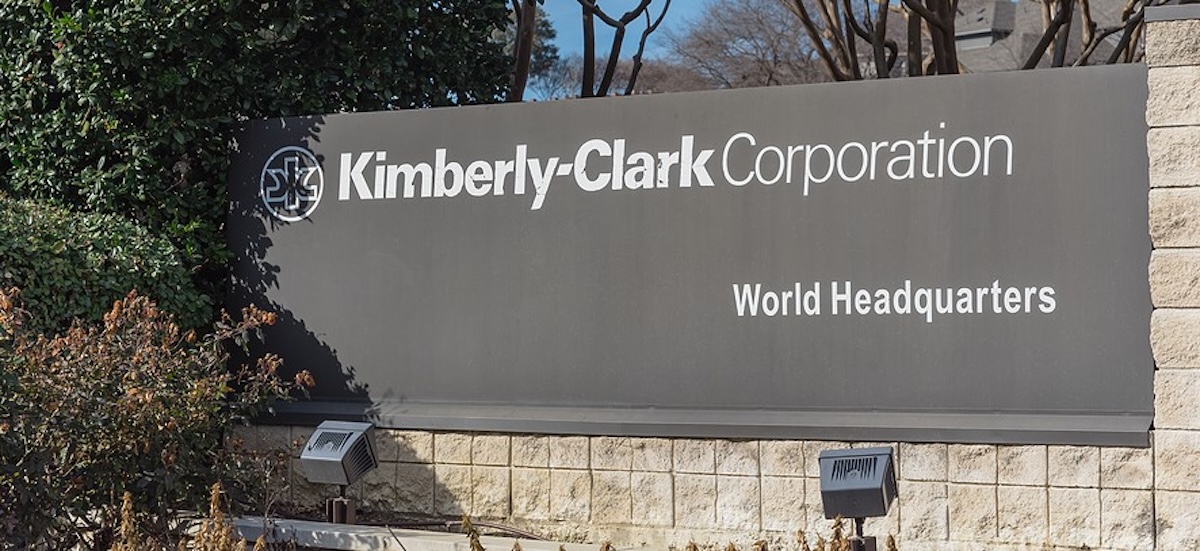Becoming more water efficient and operating more sustainably is becoming increasingly important for businesses of all sizes and across all sectors and industries, as the combined pressures of climate change, population growth, urbanisation, pollution, water mismanagement and extreme weather events take their toll on freshwater resources around the world.
It can be useful to look at what some of the biggest global corporations are doing to reduce their water footprint if you’re keen to start improving your blue credentials – and, to this end, fast-moving consumer goods conglomerate Kimberly-Clark has just published its latest annual sustainability report, revealing that it has successfully hit its 2030 water efficiency targets an impressive seven years ahead of schedule.
The organisation had planned to reduce water consumption at its sites located in water-stressed areas such as China, Indonesia, Brazil, Colombia and El Salvador by half come 2030, but it achieved a 52.8 per cent reduction in 2023 against a 2015 baseline.
These water targets were only set for those locations facing water stress and scarcity issues because Kimberly-Clark’s water consumption is apparently “not as substantial as typical consumer packaged goods companies given its product mix. Therefore, we focus our efforts on where we have the biggest impact”.
The corporation updated its water risk assessments and consumption habits to work out which areas to prioritise, with water leak detection and repair heading the list, as well as rainwater harvesting and the installation of water recycling equipment for cooling tower water.
The company hasn’t just stopped at its own water consumption and inefficiencies, however, and it has also been working alongside other stakeholders to enhance water security in basins where its factories are in operation, such as the Barbosa Mill in Colombia.
Here, work was recently undertaken to pinpoint opportunities for ecological restoration and conservation, collaborating closely with local authorities and non-government organisations to implement the appropriate changes. This model is also now likely to be replicated at other sites as a bastion of water stewardship for the company.
Kimberly-Clark’s overall water footprint strategy involves reducing water consumption and optimising wastewater treatment before it’s returned to the natural environment, using techniques through water resilience, water efficiency and water stewardship approaches.
These techniques include managing public perception, environmental hazards and regulatory compliance, implementing lean water management tools to increase productivity and decrease its water footprint, and direct engagement with the communities where the company operates on local water resource management.
The Lean Water Programme
Kimberly-Clark has worked to expand its Lean Water Programme to sites in the Asia-Pacific region, with the aim being to mitigate water risks in relation to ageing infrastructure and both water quality and quantity, as well as increasing staff awareness of water operations to reduce waste and compliance costs, while increasing productivity and efficiency across the board.
By creating a workplace culture that focuses on water quality and conservation, ownership and responsibility is afforded to site employees to prioritise water management to a similar degree as they would safety, delivery, quality and cost.
Continuous improvement in water management systems will be driven at its manufacturing facilities through investment in dashboards, metering and real-time visual management tools so that water usage can be made more efficient.
Water withdrawals, consumption and discharge for each operational site will be tracked, as well as water use efficiency at those sites that have high water use for manufacturing.
Overall progress
Water aside, other highlights included in this latest sustainability report include building on the company’s 100% Natural Forest Free commitment, protecting biodiversity and working to mitigate climate change. The hope is that the corporation will be more than halfway to achieving this goal by 2030.
Last year, Kimberly-Clark also prioritised utilisation of alternative energy sources like solar power and wind, launching a new virtual purchase power agreement and an onshore wind farm in Scotland, as well as initiating various renewable power purchase agreements.
And it’s also working to strengthen its product offerings through more sustainable solutions, such as reusable menstrual and incontinence items and its first-ever Kotex paper pouch.
Furthermore, fibre procurement from sources with sustainable forest management certification continues to be prioritised, with other alternative fibre solutions now under investigation.
Plastics is also a top priority for the company, with reductions of 16.4 per cent seen towards its goal of a 50 per cent drop by 2030 against a 2019 baseline.
Chairman and CEO Mike Hsu said: “Sustainability is woven into the fabric of our 152-year-old company’s innovation strategy and purpose, serving as a guiding principle across every facet of our operations. I am proud of our team’s commitment to our purpose of Better Care for a Better World, focusing on where we believe we can make the biggest impact.”
Newly appointed chief sustainability officer Lisa Morden made further comments, saying: “We are proud of our progress and in 2023 we continued to address challenges associated with single-use plastics, carbon emissions and water use in our operations and value chain, while working to decrease forest reliance and increasing our use of renewable energy.
“We recognise that there are still challenges and opportunities ahead and we remain dedicated to supporting a more sustainable future for all.”
What can businesses do?
Hopefully, all of Kimberly-Clark’s efforts are excellent food for thought, showcasing what can be achieved where water is concerned.
If you’re not sure where to begin, however, get in touch with the Switch Water Supplier team to see how we can help.
We can organise an audit of your entire site so you can gain a deeper understanding of how you use water and where, so you can identify the most appropriate water-saving solutions and adjust these over time to account for the changing needs of your business.
Related articles:
What is smart water and how can it be instrumental in combating climate change?







